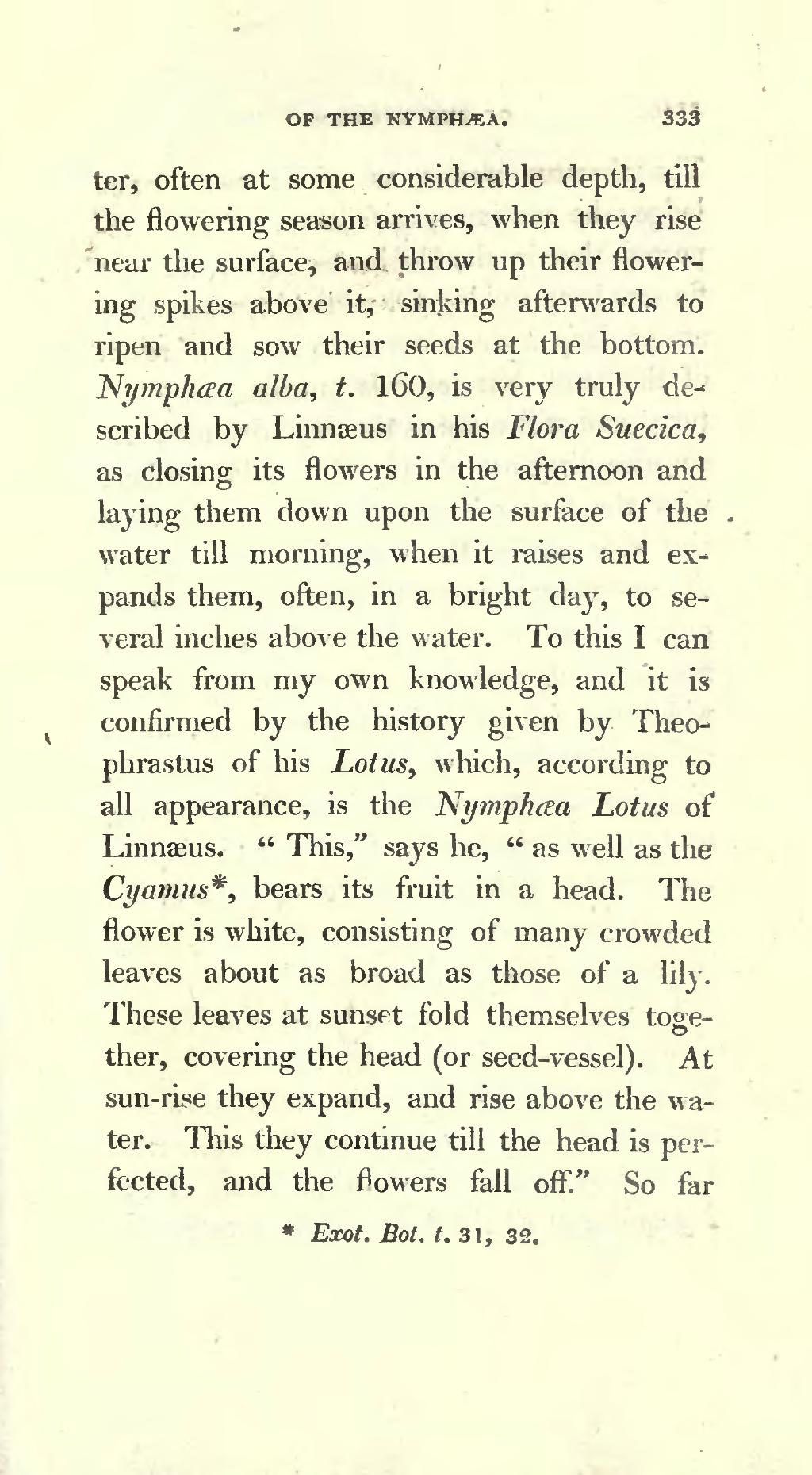ter, often at some considerable depth, till the flowering season arrives, when they rise near the surface, and, throw up their flowering spikes above it, sinking afterwards to ripen and sow their seeds at the bottom. Nymphæa alba, t. 160, is very truly described by Linnæus in his Flora Suecica, as closing its flowers in the afternoon and laying them down upon the surface of the water till morning, when it raises and expands them, often, in a bright day, to several inches above the water. To this I can speak from my own knowledge, and it is confirmed by the history given by Theophrastus of his Lotus, which, according to all appearance, is the Nymphæa Lotus of Linnæus. "This," says he, "as well as the Cyamus[1], bears its fruit in a head. The flower is white, consisting of many crowded leaves about as broad as those of a lily. These leaves at sunset fold themselves together, covering the head (or seed-vessel). At sun-rise they expand, and rise above the water. This they continue till the head is perfected, and the flowers fall off." So far
- ↑ Exot. Bot. t. 31, 32.
